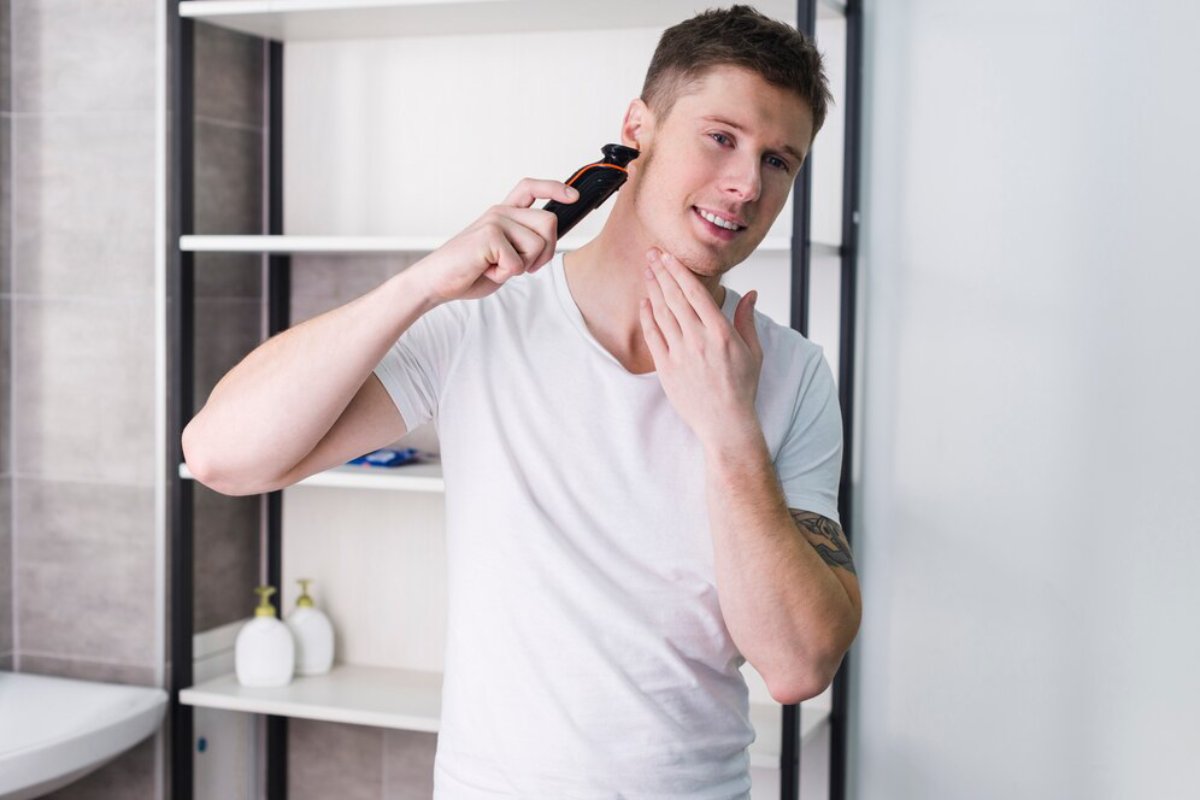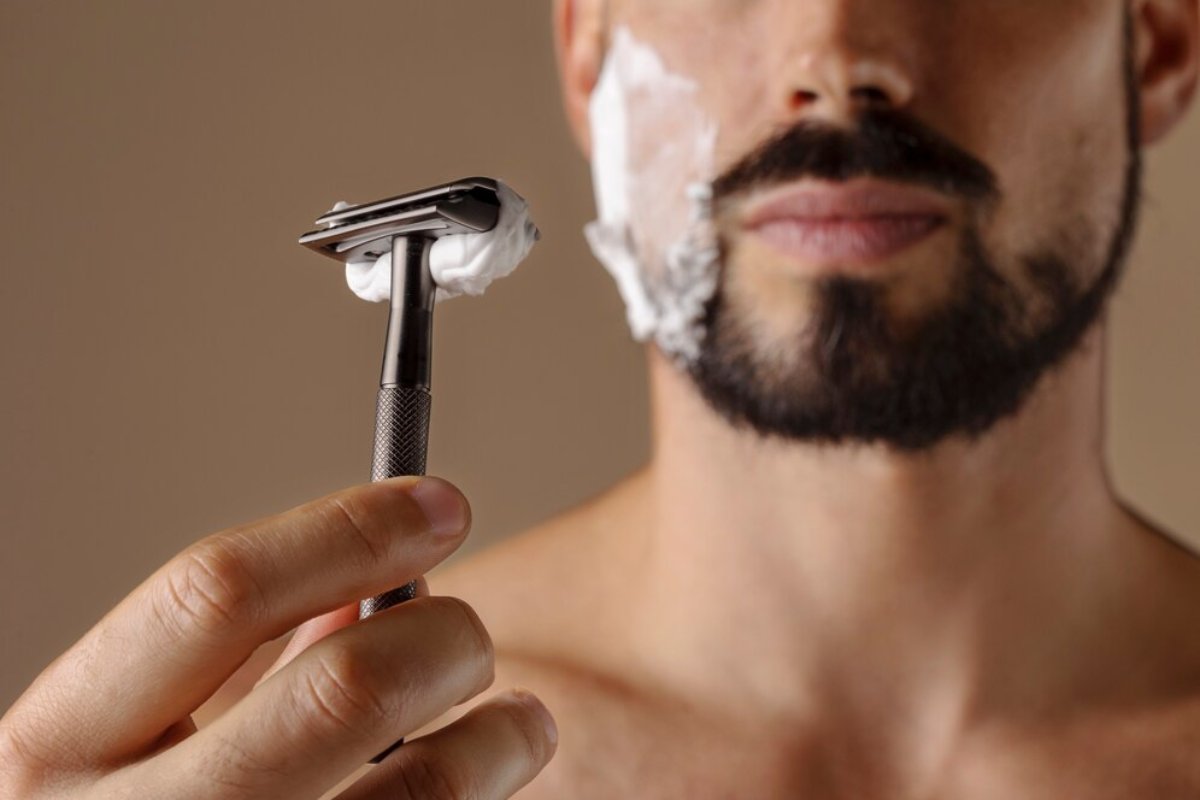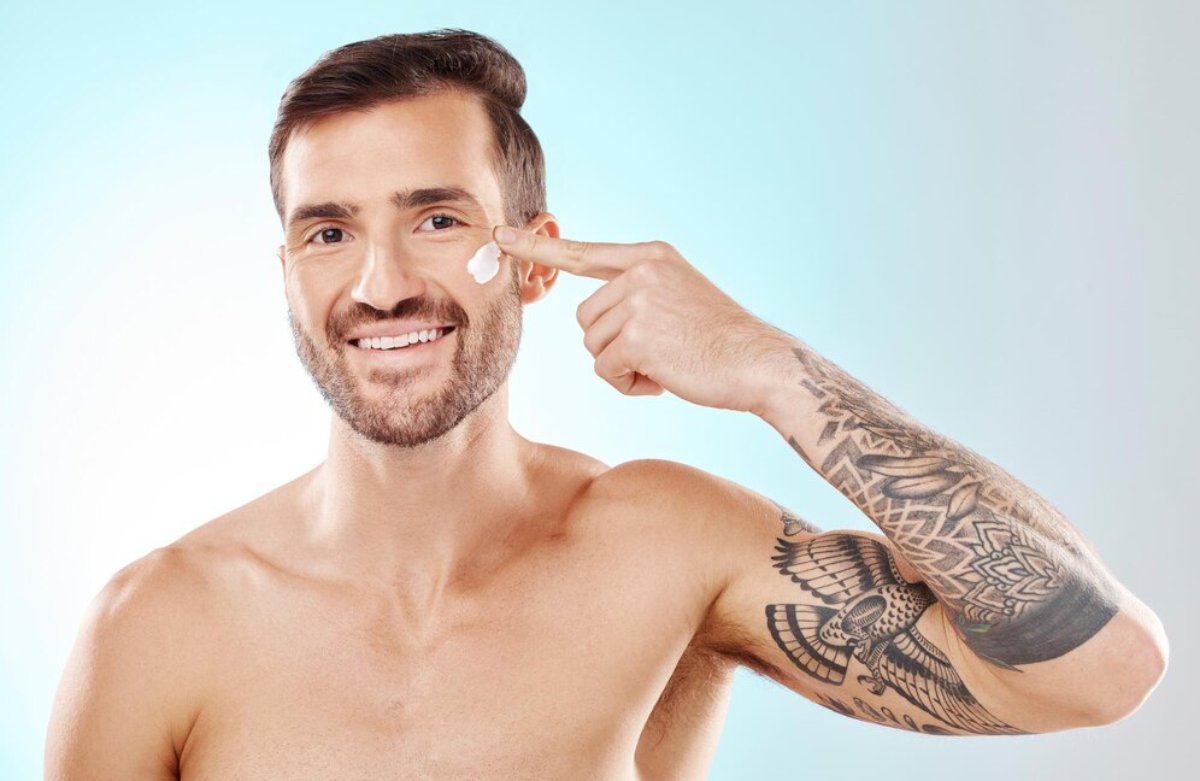
How to Prevent Ingrown Hairs After Shaving
Ingrown hairs can turn a clean shave into a painful nuisance—leaving behind red bumps, irritation, and frustration. Fortunately, they’re not inevitable.
Our team found that men who follow a smart shaving routine combined with proper post-shave care can dramatically reduce the risk of ingrown hairs and razor burn. Whether you’re shaving your face, head, or body, the key lies in preparation, technique, and aftercare.
This guide walks you through how to prevent ingrown hairs after shaving—so you can enjoy smooth skin without the hassle.
Pro Tip: A good shave doesn’t end with the last stroke—it continues with how you treat your skin afterward.

Quick Guide: How to Prevent Ingrown Hairs
- Exfoliate regularly to prevent clogged follicles.
- Use a sharp, clean razor—and replace blades often.
- Shave after a warm shower to soften hairs.
- Use proper shaving cream and technique.
- Shave in the direction of hair growth.
- Apply a calming post-shave treatment.
- Moisturise and protect your skin daily.
Important: Ingrown hairs form when cut hairs curl back into the skin. The right shave method keeps them growing in the right direction.
Step 1: Exfoliate Before You Shave
Dead skin can block hair follicles, making it easier for hairs to grow sideways or back into the skin.
How to Exfoliate:
- Use a gentle scrub 2–3 times per week
- Try chemical exfoliants like salicylic acid or glycolic acid for acne-prone or sensitive skin
- Don’t exfoliate aggressively—irritated skin is more prone to razor bumps
Tip: Exfoliating 24 hours before shaving is ideal. Avoid exfoliating immediately after shaving to prevent over-sensitising your skin.
Step 2: Prep the Skin With Warmth and Hydration
Shaving dry, stiff hair is one of the fastest ways to cause irritation and ingrowns.
Best Prep Practices:
- Shave after a warm shower to open pores and soften hair
- Use a warm, damp towel on the skin for 2–3 minutes if you can’t shower
- Apply a pre-shave oil or gel to create a smooth glide surface (optional but effective)
This prep step allows the razor to cut cleanly, reducing tugging and uneven cuts.
Step 3: Choose the Right Razor and Keep It Sharp
A dull or dirty blade increases drag, causes microtears, and encourages hairs to become trapped under the skin.
Razor Tips:
- Use a clean, sharp blade every 5–7 shaves (or sooner if shaving thicker hair)
- Single-blade razors can reduce irritation compared to multi-blade ones
- If prone to ingrowns, try an electric shaver or foil razor with adjustable length settings
- Rinse your blade after each stroke and disinfect it regularly
Important: Don’t press too hard. Let the razor do the work.
Step 4: Use the Right Shaving Cream or Gel
Dry shaving is a recipe for razor burn and ingrown hairs. Lubrication matters.
What to Look For:
- Low-foam or clear gel so you can see what you’re doing (especially for lineups)
- Fragrance-free, alcohol-free formulas for sensitive skin
- Ingredients like aloe, glycerin, or oat extract to soothe and protect
Apply in a circular motion to lift hairs and coat the skin evenly.
Step 5: Shave With the Grain—Not Against It
Yes, shaving against the grain can feel smoother—but it also increases your risk of irritation and ingrowns.
Best Technique:
- Shave in the direction your hair grows—especially on the neck or jawline
- For a closer shave, you can go across the grain on the second pass
- Short, gentle strokes with minimal pressure
- Rinse the blade every couple of strokes to keep it clean
Pro Tip: If you’re unsure which direction your hair grows, let it grow out for a day or two and feel the grain.
Step 6: Rinse and Calm the Skin Immediately
Right after shaving, your skin is vulnerable—give it some post-shave TLC.
What to Do Immediately After:
- Rinse with cool water to close pores
- Pat skin dry with a clean towel
- Apply an alcohol-free aftershave balm or toner with ingredients like witch hazel, chamomile, or panthenol
- Avoid heavy fragrance or menthol-based products, which can sting
Top Picks for Post-Shave Soothing:
- Proraso After Shave Balm (Sensitive Skin)
- The Ordinary Witch Hazel Toner
- Baxter of California Post Shave Healing Balm

Step 7: Moisturise and Protect the Skin
Hydration is the final—and crucial—step. Dry skin is more prone to irritation and ingrowns.
Moisturiser Tips:
- Use a lightweight, non-comedogenic lotion after shaving
- Look for niacinamide, ceramides, or hyaluronic acid for barrier repair
- If shaving in the morning, use a moisturiser with SPF or follow up with sunscreen
Keep up with daily moisturising even on non-shave days to maintain healthy skin texture and prevent flakiness.
Bonus: Ingrown Hair Prevention for the Beard, Neck & Body
Different areas need different care. Here’s how to tailor your technique:
Beard / Face
- Stick to single-pass shaves
- Trim instead of shaving clean if prone to irritation
- Use beard oil between shaves to keep follicles soft
Neck
- This is where most men get ingrowns—treat with extra care
- Avoid tight collars after shaving
- Use chemical exfoliants like salicylic acid 2–3x per week
Body (Chest, Legs, Groin)
- Use trimmers for sensitive areas to reduce skin contact
- Avoid shaving daily—give skin 24–48 hours to recover
- Apply a post-shave lotion or soothing gel immediately after
Best Products to Prevent Ingrown Hairs (2025 Picks)
| Product Type | Recommended Option |
| Pre-shave Oil | The Art of Shaving Pre-Shave Oil |
| Shave Gel | Cremo Cooling Shave Cream |
| Post-Shave Balm | Bulldog Sensitive Aftershave Balm |
| Ingrown Treatment | Tend Skin Solution / Paula’s Choice BHA Liquid |
| Exfoliator | Jack Black Face Buff / The Inkey List PHA Toner |
| Moisturiser | CeraVe AM/PM Facial Moisturising Lotion |
Warning: Avoid plucking ingrown hairs unless they’re visibly trapped and easy to access. Digging or squeezing can lead to infection, scarring, or hyperpigmentation.
Frequently Asked Questions
1. What causes ingrown hairs?
Shaved hairs that curl and grow back into the skin instead of outward. Friction, poor technique, and clogged pores can increase the risk.
2. Can exfoliating too often cause more ingrowns?
Yes. Over-exfoliating can damage your skin barrier and increase irritation. Limit to 2–3 times per week max.
3. Are certain razors better for preventing ingrowns?
Yes. Single-blade safety razors or electric trimmers often cause less irritation than multi-blade razors.
4. Should I pop ingrown hairs?
No. Avoid squeezing. If it’s inflamed, apply a warm compress and let it rise to the surface. If needed, use a sterile needle or see a dermatologist.
5. How long does it take for ingrown hairs to go away?
Most resolve within a few days to a week. Avoid shaving the area while healing and apply a salicylic acid treatment to help it clear.
Shave Smart, Stay Smooth
Preventing ingrown hairs is all about intentional preparation, careful technique, and mindful aftercare. By taking just a few extra steps in your shave routine, you can avoid irritation, reduce inflammation, and enjoy skin that looks—and feels—healthier.
So ditch the rush shaving habits, treat your skin right, and take control of your post-shave experience. Your face (and body) will thank you.


